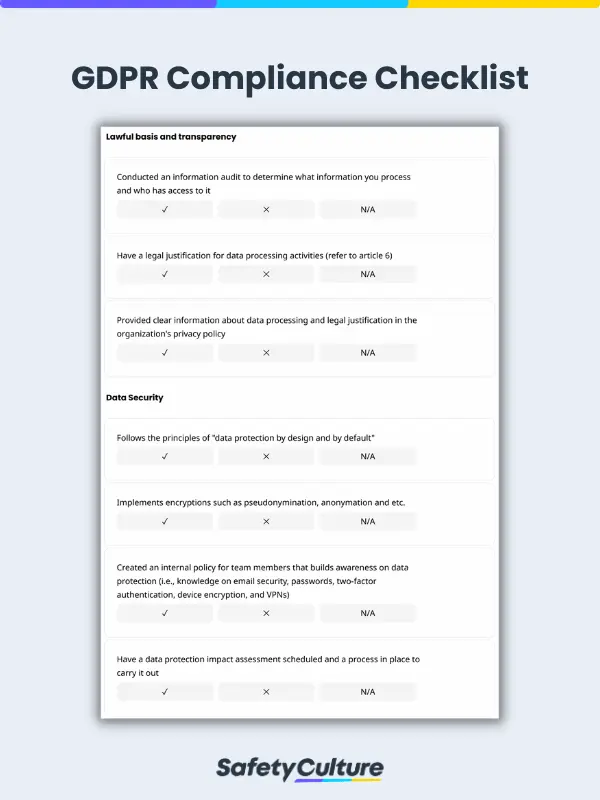What is a GDPR Compliance Checklist?
A GDPR compliance checklist is a tool guide based from the seven protection and accountability principles outlined in Article 5.1-2 of the GDPR. This is used by organizations to: assess existing data security efforts and as a guide towards full compliance. Complying with GDPR benefits businesses because it helps promote better data security, improved consumer confidence, reduced maintenance costs, and better alignment with evolving technology.
What is GDPR?
GDPR (General Data Protection Regulation) is a data privacy and security law of the European Union that touches on the rights of individuals in controlling how their personal data is collected and processed by data organizations. GDPR aims to raise accountability for data protection by placing new obligations for organizations, allowing them to react faster and minimize potential damage from data breaches. This legislation applies to any firm operating within the EU and those holding EU citizen data regardless of their geographical location. Non-compliance with the GDPR can result in costly fines and penalties of up to €20 million ($22,263,100) or 4% of global revenue and can cause significant reputational damage.
3 Necessary Measures for Achieving GDPR Compliance
Compliance with GDPR falls into how organizations follow the regulation’s principles. Below are the 3 of the 7 principles under GDPR and its corresponding measures to mitigate exposure to regulatory penalties.
- Accountability
Accountability is a GDPR principle that focuses on organizations’ responsibility to comply with GDPR and to demonstrate compliance.What you need to do:
- Appoint a data protection officer & designate other data protection responsibilities amongst the team
- Implement data protection policies, organizational security measures, and data governance guidelines
- Document collected data, hence providing its use, its storage location, and the employee responsible for it
- Have data protection or data processing agreement contracts with third party processors
- Data Security
This principle requires to handle data securely by implementing the “appropriate technical and organizational measures.”What you need to do:- Implement technical measures such as encryption, pseudonymization or anonymization of personal data
- Implement organizational measures such as staff training and limiting access to personal data
- Carry out data protection impact assessments
- Have processes in place for data breaches (e.g., a system that notifies data subjects)
- Lawfulness, fairness, and transparency
This principle requires data to process personal data fairly. This obligates informing data subjects what and where their personal data will be used for.What you need to do:- Conduct information audits to determine the information process and people who have access to it. (e.g., impact assessments, comprehensive risk assessment, gap analysis)
- Have a legal justification for data processing activities
- Provide concise, transparent, intelligible and easily understandable information of data processing to inform users how and why you manage and use their data
These are just three out of several other more provisions of GDPR. Achieve full compliance by seeking legal advice from lawyers that specialize in GDPR to determine which provisions apply to your circumstances. Use GDPR compliance forms to ensure an accurate record of GDPR audits.



